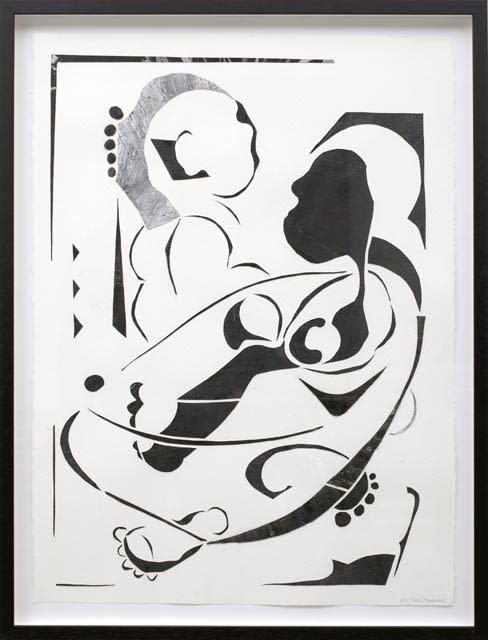Ronald Zuurmond | Paintings and works on paper
"I don't know," he says in a low voice, "it's always searching, doubt." His temporary, sober studio in Tilburg does not make it easier to find the answers either. Or is it ?
You could call Ronald Zuurmond a classical painter. Which means; paint and nature. Nature, the naturalistic as the point of departure; paint, brushes, linen and paper as material. Nature does not come in by itself in that studio. One window gives a view of a blind wall. Light is there; image - let alone example - is not there. Painting directly to nature is not there for him. Giorgio Morandi
(1890-1964), the famous painter from Bologna, did not need much more than that: a view of a blank wall, which he frequently - in addition to his renowned still lifes - painted. That works differently at Zuurmond. He collects images in his head. Images from the world outside the studio. From literature, the magazine or newspaper, television or film. The images are filtered by the artist and stripped of non-relevant details. Or supplemented with details that do matter. But always that uncertainty about the final result that the painting will have to be.
Always asking questions is the natural attitude of the scientist. It is not surprising that Ronald Zuurmond initially opted for that scientific world and started to study sociology, before going to the Academy and following his vocation to become a painter.
The thinker who is Zuurmond knows how to deal flawlessly with the questions asked and with painterly problems. A painting comes into being while doing it. And to satisfaction or not. If, after a long consideration, the painting for which he had the idea does not arise, he takes a rigorous approach. He does not paint it over, nor does he scrape the paint off the canvas again. He cuts out the
motif on the canvas that he does like, literally. Then this cut-out piece of linen will start a new life on a new painting. No destruction, but construction of a new painting.
In this way also the drawings, or actually collages, arise. From cut-out residual material painted linen, wonderful and beautiful drawings are created. Even in the pattern of cut you recognize the artist's own and authentic visual language, as it is instantly recognizable in the phenomenal "paper coupes" of Matisse. Although the way it was created is a different one, but just as the old Matisse's physical inability to paint was by no means an artistic obstacle, Zuurmond transforms his doubt into artistic accuracy.
With Ronald Zuurmond, every painting, drawing or collage only comes into being after all doubt has been removed, any uncertainty has been removed and he has given a convincing answer to his own questions.
Paul van Rosmalen












